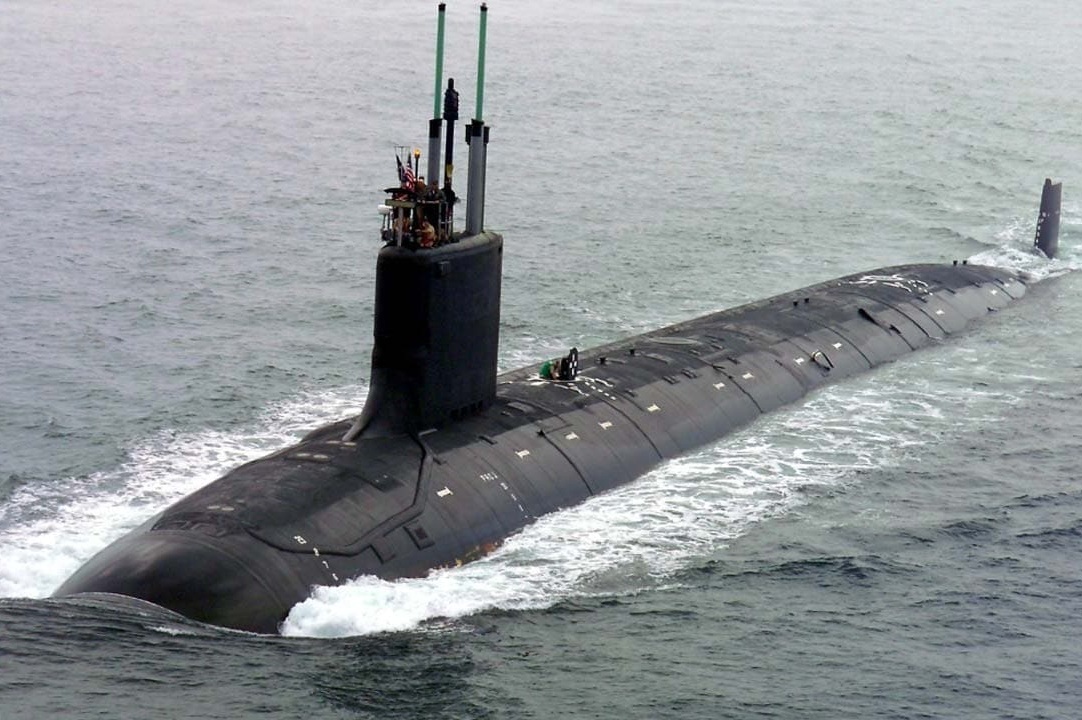Movement of Nuclear Submarines: Escalating Tensions or American Rhetoric?
TEHRAN (Defapress) - Recently, America's President Donald Trump ordered the relocation of two of the country's nuclear submarines to "suitable areas." This move follows his frustration over peace negotiations to end Russia's war in Ukraine. However, Trump did not specify in his remarks whether the submarines in question are nuclear-powered or submarines carrying nuclear missiles.

Another critical point is that due to America's military protocols, the exact location of these submarines has not been disclosed. This lack of detail makes a more precise analysis difficult.
Comparing America and Russian Nuclear Capabilities
To better understand this action, it is necessary to compare the nuclear capabilities of the two countries. America and Russia together hold roughly 87% of the world's total nuclear stockpile, with about 83% of deployed or operational nuclear warheads controlled by these two geopolitical competitors. According to the Federation of American Scientists, as of January 2025, approximately 12,241 nuclear warheads are held by nine countries worldwide.
Data from the non-profit Arms Control Association shows that America has deployed 1,419 strategic warheads and Russia 1,549 strategic warheads on hundreds of bombers and missiles. These numbers indicate relative parity in the number of strategic warheads, though there are differences in the structure and types of weapons.
America conducted its first nuclear test explosion in July 1945, followed by dropping two atomic bombs on the Japanese cities of Hiroshima and Nagasaki the next month. Four years later, the Soviet Union carried out its first nuclear test.
Nuclear Submarine Fleets
With 71 nuclear submarines, America possesses the world's largest undersea fleet. This includes 14 Ohio-class ballistic missile submarines (SSBNs), four Ohio-class guided missile submarines (SSGNs) equipped with Tomahawk missiles for special operations, and approximately 53 fast-attack submarines for intelligence gathering, anti-submarine warfare, and missile support.
In contrast, the Russian Navy has fewer than 30 nuclear submarines, including about 10 strategic ballistic missile submarines (a mix of modern Borei-class and older Delta IV-class) armed with Bulava missiles, several strategic cruise missile submarines, and around six Akula-class multirole and anti-ship attack submarines. Russia is investing in expanding its fleet with Yasen-M-class submarines, but it still lags behind America in both numbers and diversity.
Viktor Vodolatsky, deputy chairman of the Russian State Duma's Committee on CIS Affairs, claimed that Russia has significantly more nuclear submarines in the world's oceans and that America's submarines have long been under Russian surveillance. Vodolatsky argued that this move does not require a specific response because Russia holds the upper hand. While this claim may seem provocative, it underscores Russia's seriousness in any potential confrontation with America.
Impact of Submarine Relocation on Tensions
To assess the impact of this move, we can look at a similar episode in 2017. At that time, during his first term, Trump announced the deployment of two nuclear submarines to the Korean Peninsula. This action helped reduce tensions and led to his unexpected meeting with North Korea's leader. However, the current tensions with Russia are different, and it cannot be said with certainty that this relocation will yield a similar outcome.
Hans M. Kristensen, director of the Nuclear Information Project at the Federation of American Scientists, described this move as escalating tensions. He believes referencing nuclear threats at this stage is inappropriate because America-Russia relations have not yet reached a point where nuclear weapons play a direct role and are merely seen as a deterrent. Kristensen also noted that Russia's repeated nuclear threats have led the West to dismiss them as mere rhetoric, diminishing the impact of Russian officials' statements.
On the other hand, it is unlikely that relocating submarines will encourage Russia to accelerate a ceasefire agreement in Ukraine. Kristensen emphasized that America's nuclear submarines are routinely stationed in areas like the Atlantic Ocean, and Russia is aware of this. Therefore, this move is unlikely to fundamentally alter Russia's strategic calculations.
In the end, it is important to note that Donald Trump's order to relocate nuclear submarines appears more of a diplomatic tool to pressure Russia than an operational shift. Given America's superiority in the number and diversity of nuclear submarines, this action could be interpreted as a show of force.
